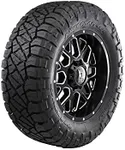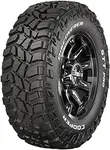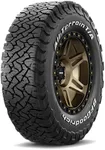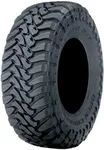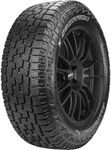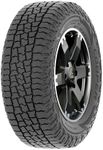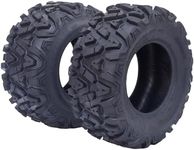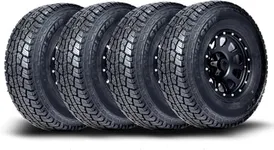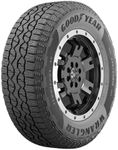Buying Guide for the Best All Terrain Tires
Choosing the right all-terrain tires for your vehicle is crucial for ensuring safety, performance, and comfort, whether you're driving on highways or off-road trails. All-terrain tires are designed to provide a balance between on-road comfort and off-road capability. To make an informed decision, you need to understand the key specifications and how they align with your driving needs and conditions.Tread PatternThe tread pattern of a tire refers to the design of the grooves and lugs on the tire's surface. This spec is important because it affects the tire's grip on different surfaces, its ability to channel water away to prevent hydroplaning, and its noise level. Tread patterns can range from aggressive, which is better for off-road traction, to more moderate, which offers a quieter and smoother ride on highways. If you frequently drive off-road, choose a tire with a more aggressive tread pattern. For mostly highway driving with occasional off-road use, a moderate tread pattern is more suitable.
Tire SizeTire size is a combination of numbers and letters that indicate the tire's width, aspect ratio, and diameter. This spec is crucial because it affects the tire's fit on your vehicle, its performance, and its handling characteristics. Larger tires can provide better off-road performance and ground clearance, while smaller tires may offer better fuel efficiency and on-road handling. To pick the right size, refer to your vehicle's manual for the recommended tire size and consider your driving conditions. If you need more off-road capability, you might opt for a slightly larger tire within the recommended range.
Load RatingThe load rating of a tire indicates the maximum weight it can safely carry. This spec is important for ensuring that your tires can handle the weight of your vehicle and any additional load you might carry. Load ratings are usually represented by a number; higher numbers indicate a higher load capacity. To choose the right load rating, consider the weight of your vehicle, including passengers and cargo. Always select a tire with a load rating that meets or exceeds the manufacturer's recommendations for your vehicle.
Speed RatingThe speed rating of a tire indicates the maximum speed at which the tire can safely operate. This spec is important for ensuring that your tires can handle the speeds you typically drive at without compromising safety. Speed ratings are represented by letters, with higher letters indicating higher speed capabilities. For example, a tire with a speed rating of 'S' can handle speeds up to 112 mph, while a tire with a rating of 'H' can handle speeds up to 130 mph. Choose a speed rating that matches or exceeds the top speed you expect to drive, keeping in mind that higher speed ratings often come with better handling characteristics.
Durability and WarrantyDurability refers to how long the tire is expected to last under normal driving conditions, while the warranty is the manufacturer's guarantee of the tire's lifespan. This spec is important because it affects the long-term cost and reliability of your tires. Durability can be influenced by factors such as tread compound and construction. Warranties are usually expressed in miles, such as 50,000 miles. To choose the right tire, consider how often you drive and the conditions you drive in. If you drive frequently or in harsh conditions, look for tires with higher durability and longer warranties.
Traction and Temperature RatingsTraction and temperature ratings are part of the Uniform Tire Quality Grading (UTQG) system. Traction ratings (AA, A, B, C) indicate the tire's ability to stop on wet pavement, while temperature ratings (A, B, C) indicate the tire's resistance to heat. These specs are important for safety and performance, especially in varying weather conditions. Higher traction ratings provide better wet grip, and higher temperature ratings ensure the tire can withstand heat buildup. Choose tires with higher ratings if you drive in wet or hot conditions frequently to ensure optimal safety and performance.
